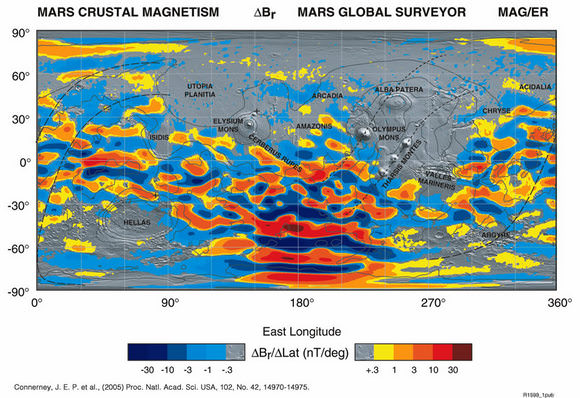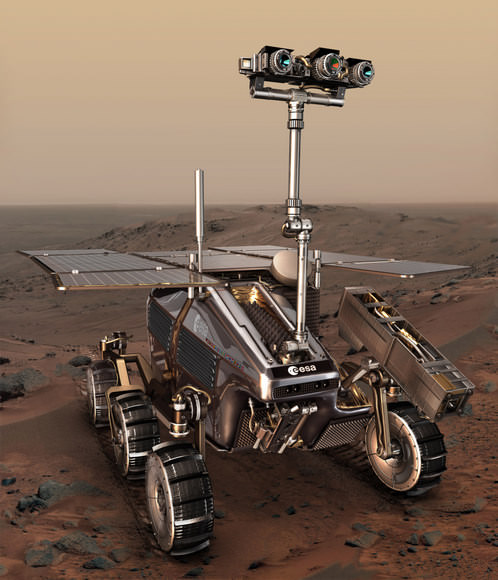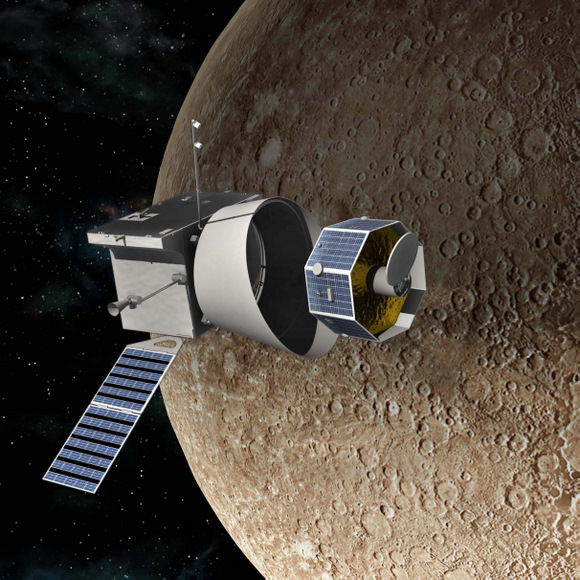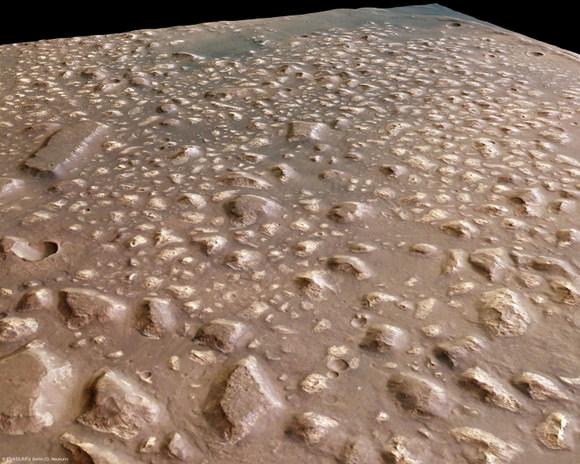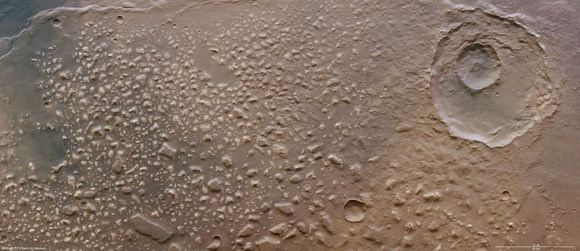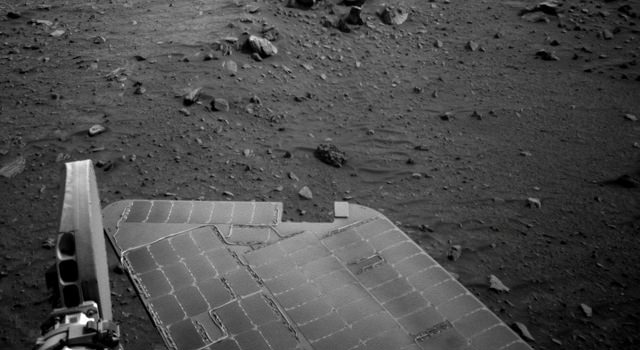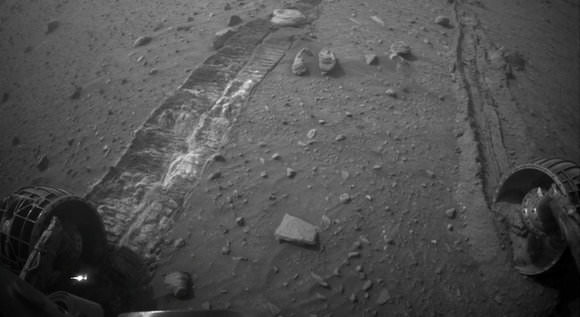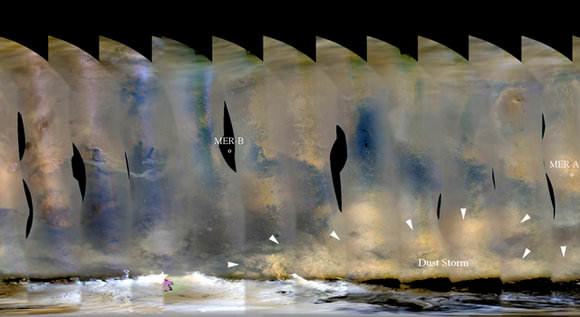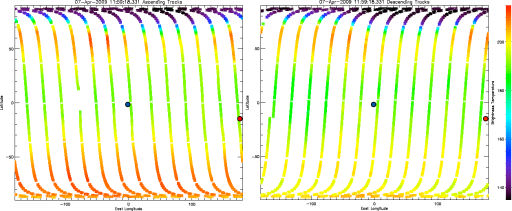[/caption]
Spacecraft orbiting Mars have found only weak magnetic fields present in various regions of the Red Planet. These fields are probably remnants of an earlier global field that has since disappeared. But how and why did the global field vanish? Recent studies have proposed that giant asteroids slamming into Mars may have wiped out the planetary magnetic field. But scientists are still trying to determine if the magnetic field was suddenly blasted out of existence or if it slowly withered away.
Mars early magnetic field was likely driven by a dynamo formed from the convection of material in the core as molten iron rises, cools and sinks, much like the Earth core works today. In a new study, Robert Lillis and Michael Manga, from the University of California, Berkeley along with James Roberts of John Hopkins University Applied Physics lab suggest that energy released by massive collisions upset the heat flow in Mars’ iron core that produced the magnetic field.
Magnetic analysis of the Martian surface indicates that when Mars was just 500 million years old, its global magnetic field disappeared. Without this shield, streams of ionizing particles spewing from the sun strip away a planet’s atmosphere, vaporizing any water on the surface, and killing any life that may have emerged, or perhaps, forcing it underground.
A massive asteroid collision would have warmed Mars’s mantle, disrupting core convection. That’s because the cooling action of the mantle draws heat from the core, keeping it churning. Without that flow, core convection grinds to a halt.
This theory fits with the observation that only the oldest impact craters on Mars are magnetized. Newer impact regions like Hellas basin are show no traces of magnetism, and must have been formed when the magnetic field of Mars had ceased to exist.
Last year Lillis and Manga linked age estimates of impact basins with magnetic field strength to show that the previously established date of heavy bombardment, about 3.9 billion years ago, corresponds to the death of Mars’s dynamo.
Now, Lillis, Manga, and Roberts have modeled the effects of heat produced by impacts. When they added the heat release from the biggest asteroids to models of mantle convection, they found that the mantle became a heating blanket rather than an ice pack. The extra heat was enough to stop core convection, the team reports in the current issue of the Journal of Geophysical Research – Planets.
Mars was hit by at least five particularly large asteroids during the bombardment. “Any one of the super-giant impacts could have shut off [the dynamo],” says Roberts. Earth likely suffered the same onslaught, but at twice the radius of Mars, it probably had a strong enough dynamo to withstand or recover from huge impacts.
But according to an article in ScienceNow, some scientists are not convinced the collisions released enough energy to influence the dynamo, which may have stopped working on its own. “The dynamo does not need to have an external influence to stop functioning,” said David Stevenson, a planetary scientist at the California Institute of Technology, adding that without enough core convection, “it may simply die of its own accord.”
Source: ScienceNow

